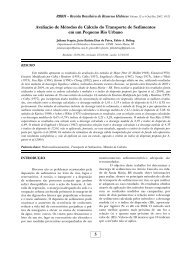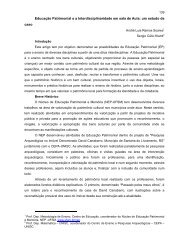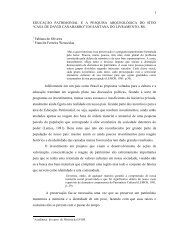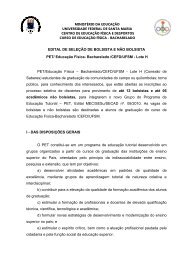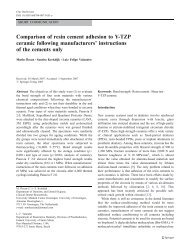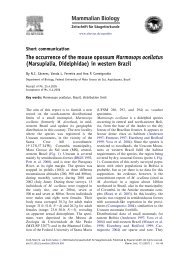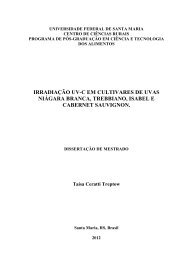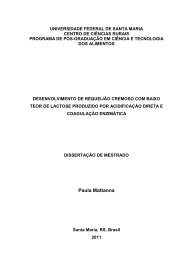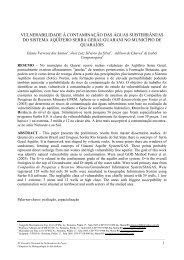DESENVOLVIMENTO E CARACTERIZAÇÃO FÃSICO ... - UFSM
DESENVOLVIMENTO E CARACTERIZAÇÃO FÃSICO ... - UFSM
DESENVOLVIMENTO E CARACTERIZAÇÃO FÃSICO ... - UFSM
Create successful ePaper yourself
Turn your PDF publications into a flip-book with our unique Google optimized e-Paper software.
39<br />
to the hydrolysis of the main ester, ethyl hexanoate 43 . Although, in the same work cited above,<br />
Ferrão 3 also describe hexanoic acid in jelly palm pulp and made a correlation between its<br />
formation in the fruit and the β-oxidation of the linoleic acid. In this sense hexanoic acid may<br />
be originating from the raw material, as well. As will be showed further, hexanoic acid is also<br />
known as caproic acid and has an odor described as fatty, cheesy, waxy, and like that of goats<br />
(Merck, 1989). The unpleasant odor of this acid may cause a strong off flavor for the beverage.<br />
Minor volatile compounds<br />
The analytical method proposed allowed the identification of 56 compounds in the<br />
volatile fraction of jelly palm wine (Table 4). The volatile compounds were predominantly<br />
esters (27), followed by alcohols (15), acids (11), lactones (2), aldehyde, ketone and carbonyl<br />
compound (1). Aroma-active esters are formed intracellular by fermenting yeast cells. Since<br />
they are lipid soluble, ethyl esters can diffuse through the cellular membrane into the fermenting<br />
medium. Although, small quantities of esters may be originate from the raw material 12,44,45 prior<br />
to fermentation, the amounts are negligible compared to those introduced enzymatically by the<br />
yeast 46 . In jelly palm fruit the most volatile compounds were identified as esters Ferrão 3 . Among<br />
the esters identified in the headspace of jelly palm wine by HS-SPME procedure, 6 of them<br />
were identified as hexanoate esters; methyl hexanoate (0.140 mg/l), 3-(E)-ethyl-hexenoate,<br />
isobutyl hexanoate, butyl hexanoate, isoamyl hexanoate and 3-methylbut-2-enyl hexanoate.<br />
Hexanoate esters could be a product of hexanoic acid reaction with different alcohols; in a<br />
similar mechanism of ethyl ester formation (in which the alcohol group is ethanol and the acid<br />
group is a medium-chain fatty acid). As was showed above, hexanoic acid is the major acid in<br />
the wine and was found in a high concentration. However, despite hexanoate esters quantities<br />
were expressive, the main ester (highest concentration) identified by HS-SPME in jelly palm<br />
wine was an acetate, 3-Buten-1-ol-3-methyl-1-acetate (0.320 mg/l). The same compound was<br />
not reported in different genotypes of jelly palm according to Ferrão 3 , however has been<br />
reported in the volatile composition of acerola 47,48 . No data was found about the formation of<br />
this compound in wine; although acetate ester are generally found in fermented beverage by the<br />
reaction between an acid group (acetate) and the alcohol group (ethanol or a complex alcohol<br />
derived from amino acid metabolism) 49 . As will be shown further, esters are desirable<br />
compounds in wine and are known for a fruity like aroma, typically described for this fruit 3 .<br />
Among the alcohols, the major alcohols found in jelly palm wine were the higher<br />
alcohols, as already described above. However, a representative number of alcohols (11) were



